Hello, How are you? We are here to talk about the new form of the human communication: The Mass Media. The media is the means of communication like T.V., radio, internet,magazines, newspapers...
History
Types of drama in numerous cultures were probably the first mass-media, going back into the Ancient World.
The first dated printed book known is the "Diamond Sutra", printed in China in 868 AD, although it is clear that books were printed earlier. Movable clay type was invented in 1041 in China. However, due to the slow spread of literacy to the masses in China, and the relatively high cost of paper there, the earliest printed mass-medium was probably European popular prints from about 1400. Although these were produced in huge numbers, very few early examples survive, and even most known to be printed before about 1600 have not survived. Johannes Gutenberg printed the first book on a printing press with movable type in 1453. This invention transformed the way the world received printed materials, although books remained too expensive really to be called a mass-medium for at least a century after that.
Newspapers developed from about 1612, with the first example in English in 1620; but they took until the 19th century to reach a mass-audience directly.
During the 20th century, the growth of mass media was driven by technology, including that which allowed much duplication of material. Physical duplication technologies such as printing, record pressing and film duplication allowed the duplication of books, newspapers and movies at low prices to huge audiences. Radio and television allowed the electronic duplication of information for the first time.
Mass media had the economics of linear replication: a single work could make money. An example of Riel and Neil's theory. proportional to the number of copies sold, and as volumes went up, unit costs went down, increasing profit margins further. Vast fortunes were to be made in mass media.
In a democratic society, the media can serve the electorate about issues regarding government and corporate entities (see Media influence).
Some consider the concentration of media ownership to be a threat to democracy.
This is a good form to give fun, information, interactivity, games and more, but the promiscuity has been generalized for the media and the society of today have sexual relationships from 12 years old, drink beer when are very youngers, or despreciate to the others people for their skin colour, their bodies, their sexual orientation or their economy...
The mass media only make us the necesity to be like this, buy everything what we see on T.V. but we think what on the future, the people will recover the concience and make something with this situation... We only can wait or start to do something...
Wasaa!
Search This Blog
Sunday, November 7, 2010
Tuesday, October 26, 2010
Teenage Pregnancy
Teenage pregnancy is defined as a teenaged or underaged girl (usually within the ages of 13–19) becoming pregnant. The term in everyday speech usually refers to women who have not reached legal adulthood, which varies across the world, who become pregnant.
The average age of menarche (first menstrual period) in the United States is 12 years old, though this figure varies by ethnicity[1] and weight, and first ovulation occurs only irregularly until after this. The average age of menarche has been declining and continues to do so. Whether fertility leads to early pregnancy depends on a number of factors, both societal and personal. Worldwide, rates of teenage pregnancy range from 143 per 1000 in some sub-Saharan African countries to 2.9 per 1000 in South Korea.
Pregnant teenagers face many of the same obstetrics issues as women in their 20s and 30s. However, there are additional medical concerns for younger mothers, particularly those under fifteen and those living in developing countries. For mothers between 15 and 19, age in itself is not a risk factor, but additional risks may be associated with socioeconomic factors.
This is small part from the reality of this social problem. it´s afect all the countries of the world, independient if they are the first or the trhird world, on everywhere.
The average age of menarche (first menstrual period) in the United States is 12 years old, though this figure varies by ethnicity[1] and weight, and first ovulation occurs only irregularly until after this. The average age of menarche has been declining and continues to do so. Whether fertility leads to early pregnancy depends on a number of factors, both societal and personal. Worldwide, rates of teenage pregnancy range from 143 per 1000 in some sub-Saharan African countries to 2.9 per 1000 in South Korea.
Pregnant teenagers face many of the same obstetrics issues as women in their 20s and 30s. However, there are additional medical concerns for younger mothers, particularly those under fifteen and those living in developing countries. For mothers between 15 and 19, age in itself is not a risk factor, but additional risks may be associated with socioeconomic factors.
This is small part from the reality of this social problem. it´s afect all the countries of the world, independient if they are the first or the trhird world, on everywhere.
Wednesday, July 28, 2010
Like a normal English class...
This is our class. In this pictures we are in the English classes, with our teacher Alicia Terán.
We are in 6th grade, exactly in artistic, and, that day, we finish with te unit "Working life" and start the second: "Humand Values" (with comics of Mafalda).
On the oral, we needed talk like stay in interviwing about X job. We use disfraces, materials, and, of course, our talent in theater...


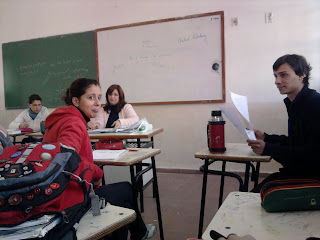
We are in 6th grade, exactly in artistic, and, that day, we finish with te unit "Working life" and start the second: "Humand Values" (with comics of Mafalda).
On the oral, we needed talk like stay in interviwing about X job. We use disfraces, materials, and, of course, our talent in theater...



Mafalda! Human Values
Now, we are on the second thematic unit: "Human Values", and our teacher, Alicia Terán, talk us about Mafalda, her favourite comic trip...
Mafalda
Mafalda is a comic strip written and drawn by Argentine cartoonist Joaquín Salvador Lavado, better known by his pen name Quino. The strip features a 5-year-old girl named Mafalda, who is deeply concerned about humanity and world peace and rebels against the current state of the world. The strip ran from 1964 to 1973 and was very popular in Latin America, Europe, Quebec, and in Asia, leading to two animated cartoon series and a movie.
History
The character Mafalda — whose name was inspired by David Viñas's novel Dar la cara — and a few others, were created by Quino in 1962 for a promotional cartoon that was intended to be published in the daily Clarín. Ultimately, however, Clarín broke the contract, and the campaign was cancelled altogether.
Mafalda became a full-fledged cartoon strip on the advice of Quino's friend Julián Delgado, at the time senior editor of the weekly Primera Plana. Its run in that newspaper began on 29 September 1964. At first it only featured Mafalda and her parents. Felipe came on the scene in January 1965. A legal dispute arose in March 1965, which led to the end of Mafalda's Primera Plana run on 9 March 1965.
One week later, on 15 March 1965 Mafalda (the character at the age of five) started appearing daily in Buenos Aires' Mundo, allowing the author to follow current events more closely. The characters of Felipe, Manolito, Susanita and Miguelito were created in the following weeks, and Mafalda's mother was pregnant when the newspaper shut down on 22 December 1967.
Publication resumed six months later, on 2 June 1968, in the weekly Siete Días Ilustrados. Since the cartoons had to be delivered two weeks before publication, Quino was not able to comment on the news to the same extent. After creating the characters of Mafalda's little brother Guille and her new friend Libertad, he definitively ceased publication of the strip on 25 June 1973.
After 1973, Quino still drew Mafalda a few times, mostly to promote human rights. In 1976 he produced a poster for the UNICEF illustrating the Convention on the Rights of the Child.
Characters
The comic strip is composed of the main character Mafalda, her parents and a group of other children. However, the group was not created on purpose, but was instead a result of the development of the comic strip. The other children were created one at a time, and worked by countering specific aspects of Mafalda. The exception was Guille, Mafalda's brother, which was created during a period when the author did not have other ideas.
Mafalda: The main character, an approximately six-year-old Argentine girl with a strong political view of the world and a proverbial hate for soup.
Mamá ("Mom") (Raquel, 6 October 1964) and Papá ("Dad") (No name, 29 September 1964): Mafalda's parents are a very normal couple, without any particular distinguishing features. Mafalda is often very critical of her mom's housewife status; her dad often tries to avoid Mafalda's snarky remarks and questions, although he very much sympathises with the kid's scary view of school life. He is a fond horticulturist.
Felipe (19 January 1965): A dreamer who is deeply scared of school, even though he's the brightest and oldest member of the gang. He often wages intense internal battles with his conscience, innate sense of responsibility, and top school grades that he hates (*shows Mafalda a note where his teacher compliments on his grades* "That is the worst good news I've ever been given!"). A consummate procastinator, he loves to play cowboys and read comics, especially the Lone Ranger.
Manolito (Manuel Goreiro, Jr., 29 March 1965): The son of a Spanish (Galician) shopkeeper, more concerned with business and money than anything else. He's shown to be simple minded, but sometimes this is not the case. He is, in fact, very creative when it comes to business plans.
Susanita (Susana Beatriz Clotilde Chirusi, 6 June 1965): A frivolous and gossip-loving girl with curly blond hair, and Mafalda's best female friend despite their bickering ("Well... you know... I'd rather freak out at you than at a complete stranger"). Her dream when she grows up is to be a mother and dedicated housewife. She and Manolito are the fiercest enemies, although is shown that Susanita is more often the perpetrator of their bickering; as the attacks are often one-sided, Manolito is caught off guard most of the times, but he has shown on occasion that he has the upper hand. At times, she seems to have a crush on Felipe.
Miguelito (Miguel Pitti, 1966): About two years younger than Felipe and one year younger than Mafalda and the others, characterized by his lettuce-shaped hair. Somewhat of a rebel, most of the time he is a little too eager to get into philosophical debates. A descendant of Italian immigrants, his grandfather is very fond of Benito Mussolini.
Guille (Guillermo, 1968): Mafalda's little brother. He loves soup (much to his sister's chagrin), has a pathological dependence on his pacifier, and he and Mafalda have a pet tortoise called Burocracia ('Bureaucracy'). Somewhat cynical and prone to histrionics.
Libertad (5 February 1970): "Libertad" is a given name in Spanish, which means "Freedom". The character is of small stature, leading to jokes about the size of freedom. It's the most politically radical character of the comic strip, more than Mafalda herself.
The characters aged at about half the real time-scale while the script ran, also going through minor changes mostly due to the evolution of Quino's drawing style.

On English Class
In English classes, we learn this language with a lot of popular people from arts, ciences,philosophy... For example:
The Beatles:
Richard Starkey(Ringo Starr) July 7, 1940-
John Winston Lennon October 9, 1940-December 8, 1980
Sir James Paul McCartney June 18, 1942-
George Harrison February 25, 1943-
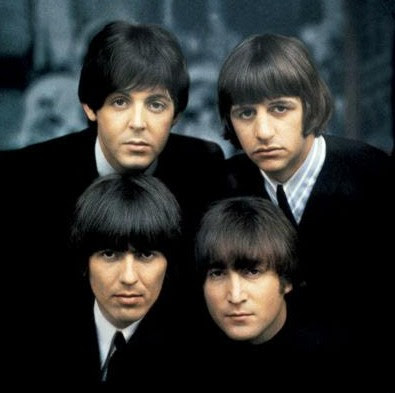
The Beatles were a pop group that took the world by storm. Their music, clothing, and hairstyles changed the world of the young. They made their first single in 1962, their first album in 1963, their last record in 1969, and broke up in 1970.
Even though the Beatles became famous in 1963, they started playing in Liverpool (where they grew up) in the late 50's, when they were called the Quarrymen. The main line-up in 1958 was John Lennon, Paul McCartney, and George Harrison, all playing guitars. Lennon started the Quarrymen in 1957 after being impressed by Elvis Presley's "Heartbreak Hotel". He invited McCartney to join in October of that year. Harrison joined in 1958. John's friend from art college, Stuart Sutcliffe and drummer Pete Best joined in 1960.
It was also in 1960 that the Quarrymen (now called the Sliver Beatles) toured Scotland. They changed their name again to the Beatles, and toured Hamburg, Germany. It was here that Stuart met his girlfriend, Astrid Kirrrrcherr. Astrid had influence on the Beatles, such as their famous mop-top hairstyles and their collarless suits. The hairstyle was created when Astrid brushed Stuart's hair from the side with bangs in the front. She did this because she didn't like Stuart's teddy-boy hairstyle. When the other Beatles saw Stuart's new hairstyle, they fell over laughing. But a few days later, George tried the new style, and eventually John and Paul. Pete was the only one that declined. Astrid made a collarless suit for Sutart, and she also made one for the other Beatles, but the seams popped when they sat down.
When the Beatles came home from Hamburg, Stuart stayed behind with Astrid. Sadly, he died of a brain hemorrhage in 1962.The same year, Pate Best was kicked out of the group and Ringo Starr replaced him. Also, that year, they signed a recording contract with producer George Martin and made their first record, "Love Me Do".
In 1963, the Beatles had their first number one: "Please Please Me". They toured all over England and also made their first foreign tour in Sweden in October of that year. They played for the royal family at the Prince of Wales Theatre on November 4, 1963. Also, in November 1963, they were becoming popular in America, which they had been trying to do for months.
On February 7, 1964, the Beatles' plane touched down at Kennedy International Airpart. Two days later, they made television history. Seventy-three million people watched the Beatles on the Ed Sullivan Sho, the record for largest viewing audience in America. On February 12, they performed at the Washington Coliseum. That year, they made their first movie, A Hard Day's Night. The Beatles did their first world tour. People showed their love for the \Beatles by buying records, clothing, posters, and other merchandise to do with the Beatles. The fans also showed their love by screaming at concerts, when they landed at airports, and wherever else they went. Boys copied their hairstyles and their clothing. This craze was called "Beatlemania".
With this song, we do a lot of excersises on class:
It's been a hard day's night, and I'd been working like a dog
It's been a hard day's night, I should be sleeping like a log
But when I get home to you I find the things that you do
Will make me feel alright
You know I work all day to get you money to buy you things
And it's worth it just to hear you say you're going to give me everything
So why on earth should I moan, cos when I get you alone
You know I feel OK
When I'm home everything seems to be right
When I'm home feeling you holding me tight, tight, yeah
It's been a hard day's night, and I'd been working like a dog
It's been a hard day's night, I should be sleeping like a log
But when I get home to you I find the things that you do
Will make me feel alright owww
So why on earth should I moan, cos when I get you alone
You know I feel OK
When I'm home everything seems to be right
When I'm home feeling you holding me tight, tight, yeah
It's been a hard day's night, and I'd been working like a dog
It's been a hard day's night, I should be sleeping like a log
But when I get home to you I find the things that you do
Will make me feel alright
You know I feel alright
You know I feel alright
We has worked with Writers like...
Alvin Toffler
In several prominent works of nonfiction Alvin Toffler has explored the effects of new technologies on human life and society. Earlier civilizations based on agriculture (the “First Wave”) or industry (the “Second Wave”) are now being supplanted by a “Third Wave” of service industries based primarily on knowledge and information, not commodities or products. This Third Wave is characterized by rapid change, flexibility, and diversity. Humans once developed a sense of identity largely from fixed experiences, spending their lives in the same place, at the same job, and within the same traditional family and society. In contemporary society, however, people increasingly move and change their jobs regularly while living in a variety of nontraditional family and social structures.
Many decry this loss of permanence in human life, but Toffler sees it as an opportunity. No longer chained to their original set of circumstances, and enjoying access to millions of people via modern transportation and computer networks, people can choose their identities. They may identify themselves by associating with ethnic or cultural groups, with organizations of professionals or hobbyists, with religions, or with social movements. If people are unhappy with their families, jobs, or groups, they can leave them and seek other alternatives. The danger is that such an extreme variety of choices may be psychologically disturbing, even paralyzing, inducing what Toffler terms “future shock”; but people must adjust to this freedom, because returning to previous, fixed values and situations is impossible.
Future Shock focuses most on the problems—and possibilities—facing contemporary people; Toffler’s other studies of coming changes in business and government, notably The Third Wave and Powershift, also involve questions of identity. These books describe the flexible, decentralized, and democratic institutions that will necessarily evolve in response to new conditions. Toffler regularly argues that new technologies will liberate, not enslave, people, and he has enjoyed growing influence. In the 1980’s, he met with Ronald Reagan and Mikhail Gorbachev, and in the 1990’s, his works were often cited by Newt Gingrich, who introduced an anthology of Toffler’s writings.

We has worked whit this prhase:
"The illiterate of the 21st century will not be those who cannot read and write, but those who cannot learn, unlearn and relearn"
And Philosophers like:
Confucius
"No matter how busy you may think you are. You must find time for reading or surrender yourself to self chosen ingorance"
Full Name: Mr. Kǒng Qiū
Date of Birth: August 27, 551 B.C.
Place of Birth: Shandong, China
Died: November 21, 479 B.C.
Place of Death: Shandong, China
Classification: Scientists & Thinkers
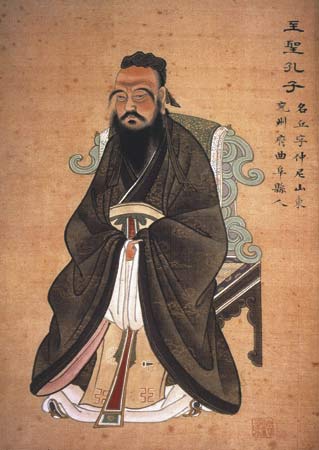
Known to the Chinese as Master Kong and to the rest of the world as Confucius, he created a philosophy based on virtue. In turn, he believed honesty, respect, sincerity, and common sense could not only join families, but also bring together the entire empire of China.
Not much is known about Confucius’ early life, but it is believed he belonged to the middle class, and therefore would have been well educated. Being part of the middle class would have also meant he was cultured and looked upon for intellectual soundness. In his mid-20s, Confucius became a government official in the State of Lu and a minister, a lofty position for a young man. He attempted to talk to the king about certain policies that governed Lu, but after doing so for several years, nothing changed. In despair about the fate of the kingdom, Confucius resigned from his post and from the politics of the king. From then on, he believed someone shouldn’t inherit power simply because of birth or lineage. On the contrary, a person should come into power based on his own merit and be representative of the people.
Confucius began traveling around northern China. He attempted to talk with kings and other rulers about their practices, hoping to right the wrongs and bring a broken land together once again. He knew that if brought the country together, China’s cultural and financial greatness would expand.
During his travels, he met many who became his disciples. While Confucianism isn’t a religion, per se, these disciples did spread his wise words, and neo-Confucianism brought greater religious context to Confucius’ teachings. Confucius came up with the premise of the modern Golden Rule. He said to a king that the greatest teaching of all is to: “Never impose on others what you would not on yourself.” He promoted the balance of social classes, stating roles should be balanced, but respect for a superior should always be recognized. Additionally, he was a proponent of using music to bring people together, knowing kings and commoners alike could share in the joy it brought.
Confucius taught that it was not the satisfaction of the senses in the present moment that would bring true happiness, but well-planned actions and the helping of fellow man which mattered most. He argued that respect should be paid to the dead but focus should not be taken away from working towards a better future. In his life, he wanted to cultivate ideas that would spread throughout China. He talked of modesty, planning, respect, and moral behavior that would not benefit only a few, but the entire empire
The Beatles:
Richard Starkey(Ringo Starr) July 7, 1940-
John Winston Lennon October 9, 1940-December 8, 1980
Sir James Paul McCartney June 18, 1942-
George Harrison February 25, 1943-

The Beatles were a pop group that took the world by storm. Their music, clothing, and hairstyles changed the world of the young. They made their first single in 1962, their first album in 1963, their last record in 1969, and broke up in 1970.
Even though the Beatles became famous in 1963, they started playing in Liverpool (where they grew up) in the late 50's, when they were called the Quarrymen. The main line-up in 1958 was John Lennon, Paul McCartney, and George Harrison, all playing guitars. Lennon started the Quarrymen in 1957 after being impressed by Elvis Presley's "Heartbreak Hotel". He invited McCartney to join in October of that year. Harrison joined in 1958. John's friend from art college, Stuart Sutcliffe and drummer Pete Best joined in 1960.
It was also in 1960 that the Quarrymen (now called the Sliver Beatles) toured Scotland. They changed their name again to the Beatles, and toured Hamburg, Germany. It was here that Stuart met his girlfriend, Astrid Kirrrrcherr. Astrid had influence on the Beatles, such as their famous mop-top hairstyles and their collarless suits. The hairstyle was created when Astrid brushed Stuart's hair from the side with bangs in the front. She did this because she didn't like Stuart's teddy-boy hairstyle. When the other Beatles saw Stuart's new hairstyle, they fell over laughing. But a few days later, George tried the new style, and eventually John and Paul. Pete was the only one that declined. Astrid made a collarless suit for Sutart, and she also made one for the other Beatles, but the seams popped when they sat down.
When the Beatles came home from Hamburg, Stuart stayed behind with Astrid. Sadly, he died of a brain hemorrhage in 1962.The same year, Pate Best was kicked out of the group and Ringo Starr replaced him. Also, that year, they signed a recording contract with producer George Martin and made their first record, "Love Me Do".
In 1963, the Beatles had their first number one: "Please Please Me". They toured all over England and also made their first foreign tour in Sweden in October of that year. They played for the royal family at the Prince of Wales Theatre on November 4, 1963. Also, in November 1963, they were becoming popular in America, which they had been trying to do for months.
On February 7, 1964, the Beatles' plane touched down at Kennedy International Airpart. Two days later, they made television history. Seventy-three million people watched the Beatles on the Ed Sullivan Sho, the record for largest viewing audience in America. On February 12, they performed at the Washington Coliseum. That year, they made their first movie, A Hard Day's Night. The Beatles did their first world tour. People showed their love for the \Beatles by buying records, clothing, posters, and other merchandise to do with the Beatles. The fans also showed their love by screaming at concerts, when they landed at airports, and wherever else they went. Boys copied their hairstyles and their clothing. This craze was called "Beatlemania".
With this song, we do a lot of excersises on class:
It's been a hard day's night, and I'd been working like a dog
It's been a hard day's night, I should be sleeping like a log
But when I get home to you I find the things that you do
Will make me feel alright
You know I work all day to get you money to buy you things
And it's worth it just to hear you say you're going to give me everything
So why on earth should I moan, cos when I get you alone
You know I feel OK
When I'm home everything seems to be right
When I'm home feeling you holding me tight, tight, yeah
It's been a hard day's night, and I'd been working like a dog
It's been a hard day's night, I should be sleeping like a log
But when I get home to you I find the things that you do
Will make me feel alright owww
So why on earth should I moan, cos when I get you alone
You know I feel OK
When I'm home everything seems to be right
When I'm home feeling you holding me tight, tight, yeah
It's been a hard day's night, and I'd been working like a dog
It's been a hard day's night, I should be sleeping like a log
But when I get home to you I find the things that you do
Will make me feel alright
You know I feel alright
You know I feel alright
We has worked with Writers like...
Alvin Toffler
In several prominent works of nonfiction Alvin Toffler has explored the effects of new technologies on human life and society. Earlier civilizations based on agriculture (the “First Wave”) or industry (the “Second Wave”) are now being supplanted by a “Third Wave” of service industries based primarily on knowledge and information, not commodities or products. This Third Wave is characterized by rapid change, flexibility, and diversity. Humans once developed a sense of identity largely from fixed experiences, spending their lives in the same place, at the same job, and within the same traditional family and society. In contemporary society, however, people increasingly move and change their jobs regularly while living in a variety of nontraditional family and social structures.
Many decry this loss of permanence in human life, but Toffler sees it as an opportunity. No longer chained to their original set of circumstances, and enjoying access to millions of people via modern transportation and computer networks, people can choose their identities. They may identify themselves by associating with ethnic or cultural groups, with organizations of professionals or hobbyists, with religions, or with social movements. If people are unhappy with their families, jobs, or groups, they can leave them and seek other alternatives. The danger is that such an extreme variety of choices may be psychologically disturbing, even paralyzing, inducing what Toffler terms “future shock”; but people must adjust to this freedom, because returning to previous, fixed values and situations is impossible.
Future Shock focuses most on the problems—and possibilities—facing contemporary people; Toffler’s other studies of coming changes in business and government, notably The Third Wave and Powershift, also involve questions of identity. These books describe the flexible, decentralized, and democratic institutions that will necessarily evolve in response to new conditions. Toffler regularly argues that new technologies will liberate, not enslave, people, and he has enjoyed growing influence. In the 1980’s, he met with Ronald Reagan and Mikhail Gorbachev, and in the 1990’s, his works were often cited by Newt Gingrich, who introduced an anthology of Toffler’s writings.

We has worked whit this prhase:
"The illiterate of the 21st century will not be those who cannot read and write, but those who cannot learn, unlearn and relearn"
And Philosophers like:
Confucius
"No matter how busy you may think you are. You must find time for reading or surrender yourself to self chosen ingorance"
Full Name: Mr. Kǒng Qiū
Date of Birth: August 27, 551 B.C.
Place of Birth: Shandong, China
Died: November 21, 479 B.C.
Place of Death: Shandong, China
Classification: Scientists & Thinkers

Known to the Chinese as Master Kong and to the rest of the world as Confucius, he created a philosophy based on virtue. In turn, he believed honesty, respect, sincerity, and common sense could not only join families, but also bring together the entire empire of China.
Not much is known about Confucius’ early life, but it is believed he belonged to the middle class, and therefore would have been well educated. Being part of the middle class would have also meant he was cultured and looked upon for intellectual soundness. In his mid-20s, Confucius became a government official in the State of Lu and a minister, a lofty position for a young man. He attempted to talk to the king about certain policies that governed Lu, but after doing so for several years, nothing changed. In despair about the fate of the kingdom, Confucius resigned from his post and from the politics of the king. From then on, he believed someone shouldn’t inherit power simply because of birth or lineage. On the contrary, a person should come into power based on his own merit and be representative of the people.
Confucius began traveling around northern China. He attempted to talk with kings and other rulers about their practices, hoping to right the wrongs and bring a broken land together once again. He knew that if brought the country together, China’s cultural and financial greatness would expand.
During his travels, he met many who became his disciples. While Confucianism isn’t a religion, per se, these disciples did spread his wise words, and neo-Confucianism brought greater religious context to Confucius’ teachings. Confucius came up with the premise of the modern Golden Rule. He said to a king that the greatest teaching of all is to: “Never impose on others what you would not on yourself.” He promoted the balance of social classes, stating roles should be balanced, but respect for a superior should always be recognized. Additionally, he was a proponent of using music to bring people together, knowing kings and commoners alike could share in the joy it brought.
Confucius taught that it was not the satisfaction of the senses in the present moment that would bring true happiness, but well-planned actions and the helping of fellow man which mattered most. He argued that respect should be paid to the dead but focus should not be taken away from working towards a better future. In his life, he wanted to cultivate ideas that would spread throughout China. He talked of modesty, planning, respect, and moral behavior that would not benefit only a few, but the entire empire
We are...
Hello! We are Alan, Martín, Yamai and Ana. We live in Las Piedras, Uruguay, and you can learn about our lifes, likes and dislikes, what we do in the high school... We go to Manuel Rosé, and our subjects are: English (of course), Literature, History of Art, Dance, Theater, Music, Economic-Society Education, Language communication and audio-visual means, Philosophy and Draw. And here we have some pictures: 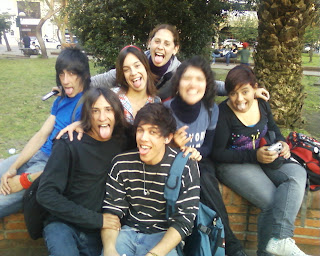
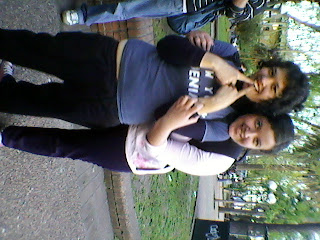
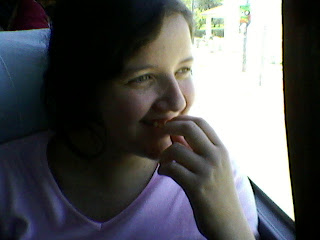

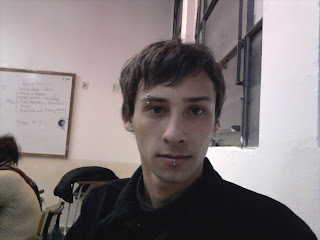





Subscribe to:
Posts (Atom)